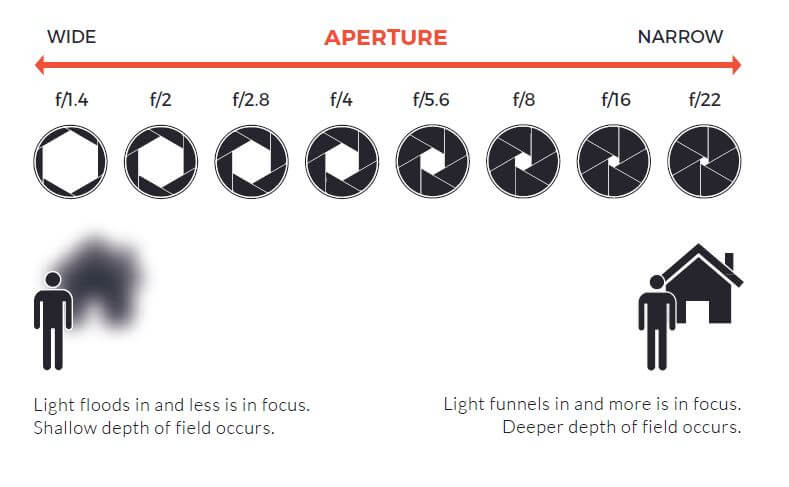What is Aperture?

Aperture Definition
It is a mechanism that is comparable to the iris. When the light is intense, the iris contracts to limit the amount of light reaching the retina. The pupil then appears small. On the other hand, when the light is weak, the iris dilates to let more light through. The size of the pupil is then larger.
When light enters a lens, to reach the sensor or the film located in the heart of a camera, it passes through a mechanical device called a “Diaphragm.”
The diaphragm is made up of several blades, the number of which varies depending on the design of the lens, and forms a hole that can vary in size to allow more or less light through. It is the diameter of this hole.
The larger it is, the more light passes through the lens.
The smaller it is, the less light passes through the lens.
Different Sizes Opening
The most common notation used to express an Aperture is a number preceded by “f/”. Some traditional aperture values are f/1.4, f/2.8, f/4, f/5.6, f/8, f/11, f/16, and f22. The vast majority of lenses offer aperture values intermediate to the reference standards.
Obtained by dividing the lens’s focal length by the maximum diameter of the beam of light passing through it, the values that make up this rating system are unfortunately counter-intuitive for beginners.
Indeed, the lower the value designating the aperture, the larger the opening. Conversely, the higher the aperture value, the smaller it is.
f/1.4 thus designates a large one that lets in a large amount of light. Such a choice is to be preferred in low-light situations.
f/22 designates a small one that allows a small amount of light to pass. Such an Aperture can be chosen in case of strong luminosity.
As one of the three components of the Exposure Triangle, it must be adjusted together with ISO Sensitivity and Shutter Speed to get the perfect exposition.

© Guillaume Buffone, all rights reserved